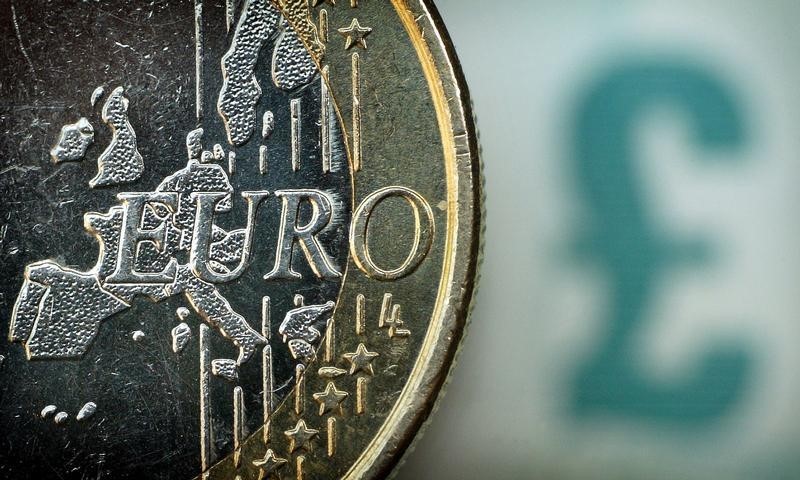Investing.com - The broadly weaker euro fell to more than seven-year lows against the pound on Wednesday, pressured lower by falling euro area bond yields as the European Central Bank’s asset purchase program began to take effect.
EUR/GBP hit lows of 0.7014, the lowest since November 2007 and was last at 0.7047, down 0.73% for the day.
The single currency had already weakened sharply this year after the ECB unveiled a trillion-euro quantitative easing program in January.
The euro resumed its sharp downward decline after the bank started asset purchases on Monday, pushing euro area bond yields to new lows. German 10-year bunds fell to fresh all-time lows on Wednesday, while the yield on Spanish and Italian 10-year bonds also hit their lowest levels on record. Yields fall as bond prices rise.
Lower bond yields make the single currency less attractive to investors at a time when expectations are mounting that the Federal Reserve could start rising interest rates in the middle of this year.
Last week’s stronger-than-forecast nonfarm payrolls report for February solidified expectations for higher rates and investors were looking ahead to next week’s policy statement to see if it would drop its reference to being patient before raising rates.
The U.S. dollar index, which measures the greenback’s strength against a trade-weighted basket of six major currencies, hit highs of 99.5 on Wednesday and was last at 99.27, not far from the psychologically important 100 level last reached in April 2003.
Sterling was at five-week lows against the stronger dollar, with GBP/USD sliding 0.29% to 1.5024.
The pound came under pressure after data earlier Wednesday showed that U.K. industrial output declined unexpectedly in January.
The Office for National Statistics said U.K. industrial output fell 0.1%, compared to expectations for a 0.2% increase, as work in the information technology and machinery sectors slowed.
Manufacturing output fell 0.5% in January, the ONS said, disappointing expectations for a 0.2% increase.
On a year-over-year basis, industrial output was up 1.3% while manufacturing output rose 1.9% in January, slowing from 2.6% in December.
The report indicated that the economy had a subdued start to the year and highlighted the risk that sterling’s current strength against the euro could pose a threat the export dependent sector.
Elsewhere, EUR/USD hit 12-year lows of 1.5060 Thursday, before pulling back to 1.0601, still down 0.88% for the day. EUR/JPY hit 18-month lows of 128.33 and was last at 128.63.
